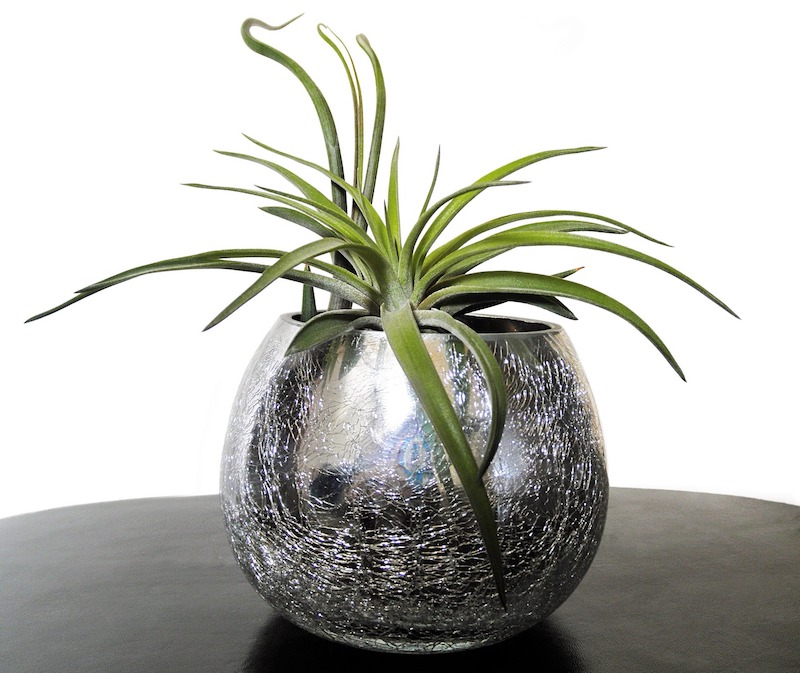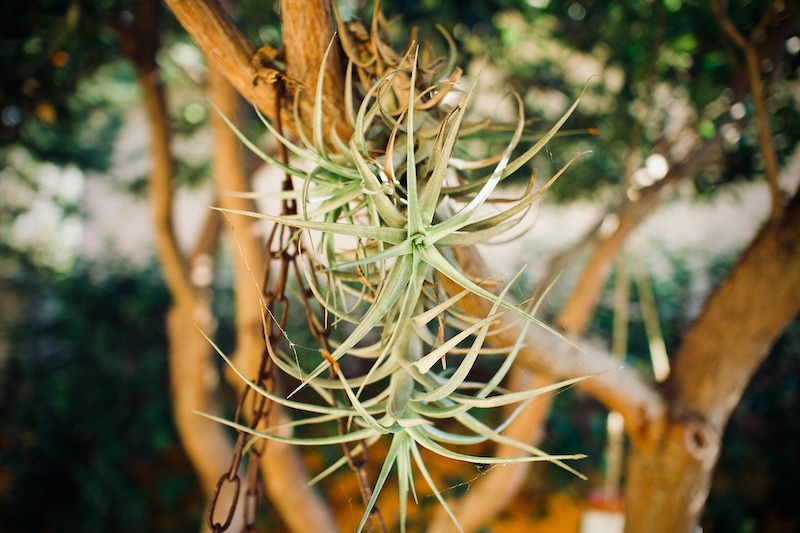Growing Air Plants
As the name “air plants” suggests, this category of plant has some fairly unique care requirements. Unlike most houseplants, it wants nothing to do with potting soil. Roots only grow on this plant for the sake of anchoring the air plant to trees or other objects. Regular misting or soaking and choosing the correct environment for an air plant are the most critical care factors.
Advanced houseplant growers can enjoy incorporating air plants into a more complicated display. Beginners alike might find they are easily able to grow these interesting plants – the lack of soil may even make the air plants easier to monitor and tend.

Air Plant Sunlight Requirements
Air plants require bright indirect light to thrive, although they can do perfectly well under artificial light given specific conditions are met. In natural light, 4 to 6 hours of bright indirect light is best for plant health. Rooms with natural light and east- or south-facing windows are often ideal locations for air plants.
Too much light or intense direct light will burn the plant. If an air plant is not getting enough light, it may fade in color, become soft, or wilt. If an air plant is grown under entirely artificial light, the best option is a full-spectrum fluorescent light that will remain on for at least 12 hours per day.

Planting Air Plants
Air plants should not be planted on soil. They are epiphytes, so in nature they grow on trees or other objects and absorb nutrients and moisture from their surroundings using their leaves. Imitating this way of growing in nature will help to ensure success when air plants are cultivated as houseplants.
It is possible to keep the air plants as standalone pieces, mount them to wood or cork, or utilize them in a terrarium, aerium, or bowl. Make sure a terrarium or bowl has a large enough hole or opening to ensure that air flow is sufficient for the air plant; rot can occur if moisture sits on the plant.
Watering Air Plants
Proper watering is crucial to air plant survival. Regular misting is a great idea, as many species of air plant prefer high humidity. As a general rule of thumb, the greater the light intensity and warmth around an air plant, the higher the humidity must remain. In addition to or as a replacement for regular misting, soaking the plant in room temperature rain or tap water for 5 to 10 minutes once per week will ensure the air plant has enough moisture. Avoid using softened water.
Following soaking or misting, be sure to position the air plant so the leaves will dry quickly; standing water in the plant often leads to rot. Poor air circulation around the plant can cause rot. Insufficient water can cause leaf curl or browning. The plant might also feel soft to the touch and completely fall apart.
Fertilizing Air Plants
Air plants require little fertilization, but correct fertilizer application encourages plant growth and flowering and pup formation. Use fertilizer labeled specifically for air plants, bromeliads or orchids. Apply this fertilizer once per month as part of the regular watering or misting process.
Air plants absorb nutrients through their leaves, so fertilizers containing salts or urea-based nitrogen will burn the plants. Excessive fertilizer application will also burn the plant, beginning with the leaf tips. Be sure to fertilize the air plant if it begins to “blush” or bloom to encourage vigorous flowering and pups.

Common Air Plant Problems
Most air plant problems are related to improper watering or other environmental problems. Inadequate moisture causes air plants to look curled or folded and eventually brown. Too much water (or the plant not drying off within a few hours of watering or misting) will cause rot. Poor quality or softened water will cause salt deposits to form on the leaves.
Too much or too intense of light will burn foliage; insufficient light causes the plant to fade and wilt. As the air plant grows naturally, the oldest leaves may die or turn brown. To keep the plant attractive, trim these leaves off at an angle to maintain a natural look. Pests rarely affect healthy air plants, but they may have issues with mealybugs and scales.
Propagating Air Plants
Air plants only bloom once. When air plants reach their flowering stage, they also produce “pups,” or small shoots that grow from the mother plant. Typically, an air plant will form 2 to 8 pups. Once pup formation starts, the plant may look wilted or dry because the mother plant is sending much of its nutrients to the pups. For this reason, maintaining a fertilizer regimen throughout flowering and pup formation is important. Additionally, removing the flower stem also encourages pup growth.
These pups can remain in a clump or a string with the mother plant or removed from the mother when they reach one-third the size of the mother plant. At this size, gently tease the pups off of the mother plant to create new individual plants.
Growing Air Plant Outdoors
It is possible to grow air plants outdoors if conditions are appropriate. The ideal temperature for the air plant is in the 70s, although an acceptable temperature range is 60 to 90 degrees. As with plants kept indoors, avoid positioning outdoor air plants in full, direct sunlight. A screened porch or under a shade tree where light is indirect or dappled would work well.
Plants kept outdoors will also require more monitoring than indoor counterparts. They will be subject to more environmental extremes in temperature and humidity and may require more frequent watering or misting.
 |
Author Angela Ryczkowski - Published 2-25-2023 |
Plants We Recommend
